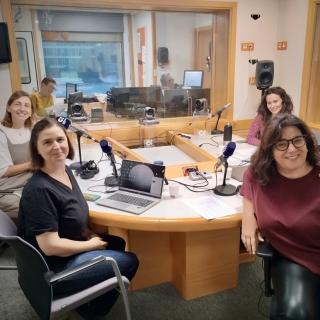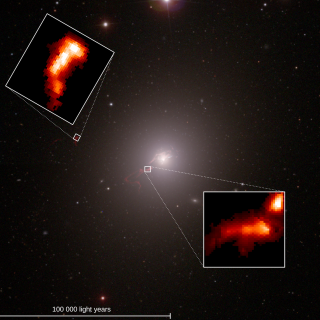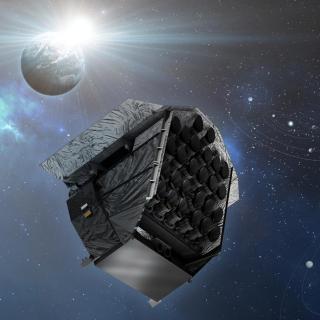It may interest you
-
 El programa de divulgación científica del Instituto de Astrofísica de Canarias (IAC) en La Radio de Canarias, " Soñando Estrellas" , emitirá su próximo episodio este viernes, 5 de diciembre, a las 22:30 horas, y posteriormente estará disponible en plataformas digitales . E l espacio, de 30 minutos de duración aproximada , y está dirigido y presentado por Verónica Martín . En este episodio, la investigadora del IAC y de la Universidad de La Laguna , Adriana de Lorenzo-Cáceres Rodríguez , hablará de qué tienen en común nuestra galaxia, la Vía Láctea, con sus galaxias ‘primas’ similares a ellaAdvertised on
El programa de divulgación científica del Instituto de Astrofísica de Canarias (IAC) en La Radio de Canarias, " Soñando Estrellas" , emitirá su próximo episodio este viernes, 5 de diciembre, a las 22:30 horas, y posteriormente estará disponible en plataformas digitales . E l espacio, de 30 minutos de duración aproximada , y está dirigido y presentado por Verónica Martín . En este episodio, la investigadora del IAC y de la Universidad de La Laguna , Adriana de Lorenzo-Cáceres Rodríguez , hablará de qué tienen en común nuestra galaxia, la Vía Láctea, con sus galaxias ‘primas’ similares a ellaAdvertised on -
 An international team of astronomers has captured the most detailed and completed view yet of the mysterious filaments surrounding the giant galaxy M87. Using new observations from the Gran Telescopio Canarias and the Canada-France-Hawaii Telescope, the study reveals how these long, thread-like structures move, evolve, and interact with their galactic environment and the activity of the central supermassive black hole. These findings have just been published in Monthly Notices of the Royal Astronomical Society. M87: a giant galaxy and its mysterious threads M87, located about 55 millionAdvertised on
An international team of astronomers has captured the most detailed and completed view yet of the mysterious filaments surrounding the giant galaxy M87. Using new observations from the Gran Telescopio Canarias and the Canada-France-Hawaii Telescope, the study reveals how these long, thread-like structures move, evolve, and interact with their galactic environment and the activity of the central supermassive black hole. These findings have just been published in Monthly Notices of the Royal Astronomical Society. M87: a giant galaxy and its mysterious threads M87, located about 55 millionAdvertised on -
 The PLATO (PLAnetary Transits and Oscillations of Stars) space mission, led by the European Space Agency (ESA), has recently completed one of the most delicate phases of its development: the integration of its main components, the 26 scientific cameras and the service module that houses all the instrument's acquisition, processing, and control electronics. This stage, carried out at the facilities of the aerospace company OHB in Germany, marks a fundamental step toward the launch scheduled for December 2026 from French Guiana aboard an Ariane 6 rocket. “Almost eight years after ESA gave theAdvertised on
The PLATO (PLAnetary Transits and Oscillations of Stars) space mission, led by the European Space Agency (ESA), has recently completed one of the most delicate phases of its development: the integration of its main components, the 26 scientific cameras and the service module that houses all the instrument's acquisition, processing, and control electronics. This stage, carried out at the facilities of the aerospace company OHB in Germany, marks a fundamental step toward the launch scheduled for December 2026 from French Guiana aboard an Ariane 6 rocket. “Almost eight years after ESA gave theAdvertised on
